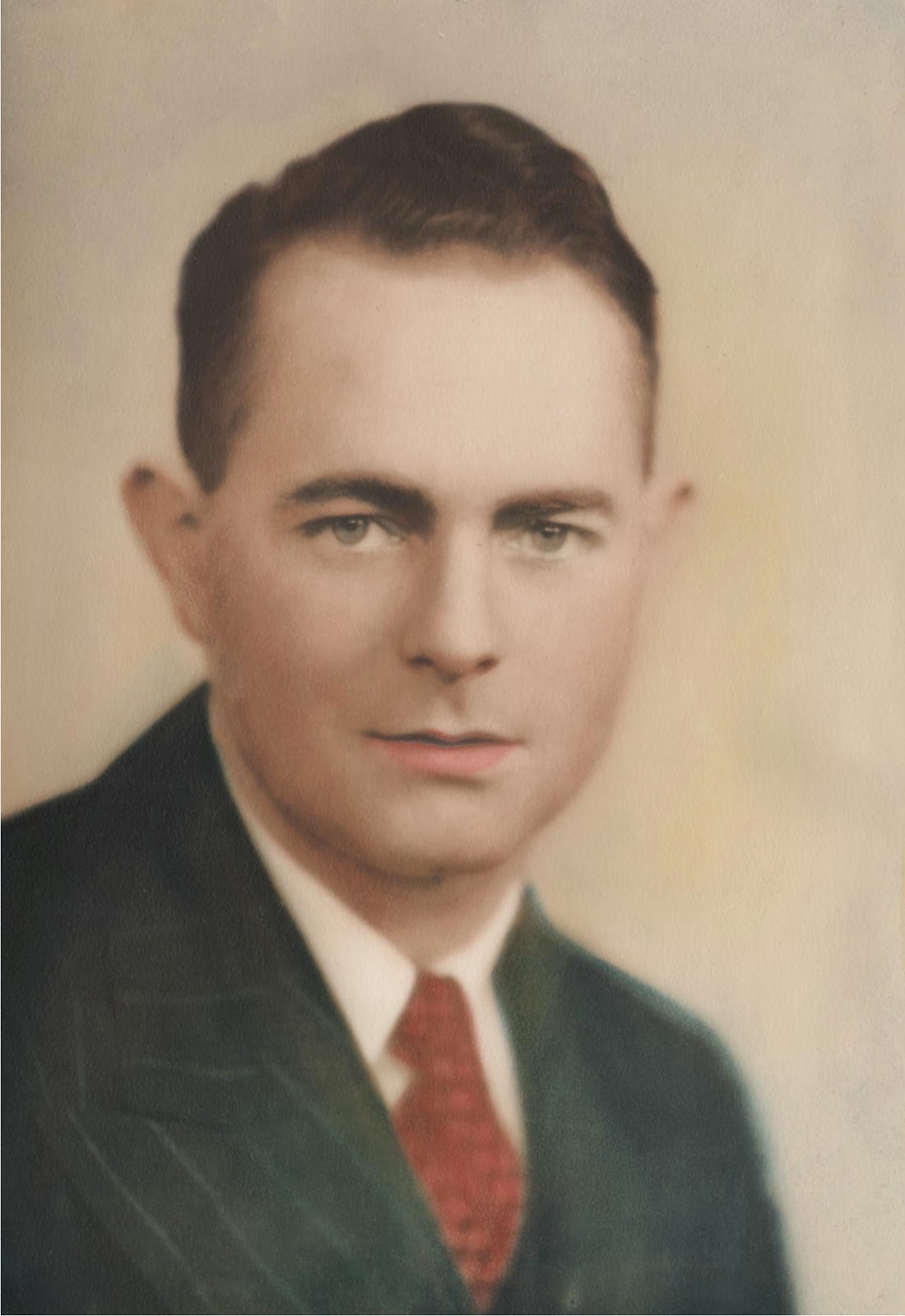 |
| Click to Enlarge Iva Griffith McElroy |
I usually blog about my adventures while researching my own genealogy, but for a long time I've been wanting to begin looking into the ancestry of my wife Michelle.
A few years ago, her father gave her a box of things that belonged to her paternal great-grandmother, Iva Griffith McElroy, and at the top of my list for 2015 was to explore its contents. Because I love old photos, I was especially pleased to find several envelopes of negatives included with the photos, clippings and articles that were in the box.
 |
| Click to Enlarge |
Since we were snowed in this weekend, it gave me time to scan the negatives and upload them to this Flickr gallery.
Iva Ann Griffith was born June 27, 1900 in Cambridge, Nebraska. According to the 1900 census, taken a few months before her birth, Iva's mother, Lethie Minerva Griffith, was the head of the household. Also living in the home was Lethie's three-year-old daughter, Mabel, and 28-year-old brother, George Arbaugh.
Iva's mother had married Charles Wesley Griffith (Sept. 27, 1846 - Mar. 20, 1908) on June 28, 1895. It's unknown where he was when the 1900 census was taken, but it doesn't seem he was living with the family. Lethie was his second wife and he had a bunch of children with his first.
 |
| Click to Enlarge Written on the back of photo: Lethie Griffith's Blacksmith Shop, 1905 Arco, Idaho |
By 1905, Lethie had moved to Arco, Idaho where she apparently managed a blacksmith shop and by 1908, it appears she possibly married Leon R. Richards and eventually settled in Clackamas, Oregon.
In a document completed in 1957, Ida wrote her mother's name was Letha Tyson so that needs a little more research.
 |
| Click to Enlarge In a Portland Hospital by L.M. Griffith |
Lethie was also a poet as indicated by a note on a page taken from a book of poetry called "Gems of Poesy." Michelle's grandmother, Rose Reyner, wrote that her grandmother had written the poem.
Lethie died Oct. 30, 1932 at age 66.
Iva married Alvin Allen Hash (Oct. 23, 1894 - March 31, 1957) in Oregon in 1920. Their children were John A. Hash, George Hash, Rose Hash (Michelle's paternal grandmother) and William Hash.
According to the 1940 census, the family was living together in Clackamas, Oregon. From 1949 to 1951, Alvin and Iva Hash owned and operated cottages and I assume the photos from the negatives were taken around this time and are of their children and guests at the cottages.
At some point in the early 1950s, Alvin and Iva divorced and he married someone named Dollie. Alvin Hash died March 31, 1957 and was buried at the Willamette National Cemetery in Portland.
 |
| Click to Enlarge Letter of recommendation for Iva Hash |
Through the 1950s, Iva worked a variety of jobs including manager of railroad dorms, home mother at a children's home and cook at the Rainbow Inn in Lebonon, Oregon.
 |
| Click to Enlarge Possibly Joseph Lynn McElroy |
Iva met Joseph Lynn McElroy at a Billy Graham Crusade and they married in Ada, Idaho on March 14, 1958.
 |
| Click to Enlarge Iva's clippings relating to her son's ministries |
Her faith was obviously important to Iva and all three sons, John, George and Bill, became ministers.
By the time Iva met Joseph McElroy he was also a man of faith but that had not always been the case.
 |
| Click to Enlarge The McElroy Family (Joseph Lynn McElroy far left) |
 |
| Click to Enlarge Joseph Lynn McElroy's graduation photos |
McElroy was a very successful engineer who had built many large buildings in Portland, Oregon and had been a major contributor to the building of the Bonneville and McNary dams on the Columbia River. According to family stories, the loss of his business to an unscrupulous business partner and the death of his young son left McElroy depressed and he eventually became an alcoholic.
One night God spoke to McElroy and told him he was going to become a great missionary. He never drank again and dedicated his life to sharing the Gospel.
After they were married, Iva and Joseph McElroy spent time in Jamaica as missionaries. McElroy died on Feb. 6, 1972 in Oregon City, Oregon.
 |
| Click to Enlarge Iva (right) and her sister, May Greer |
 |
| Click to Enlarge Ida McElroy toward the end of her life |
Ida McElroy died on December 26, 1975 and was buried at the Mountain View Cemetery in Oregon City, Oregon.
Iva's son, Dr. John A. Hash, founded Bible Pathway Ministries, an organization that provides devotional content and Bibles to countries around the world.
He died at the age of 90 in 2012.
For more blog entries, visit my Blog Home Page or to check out the genealogy research about my specific family lines, go to my Haywood County Line Genealogy Website.














